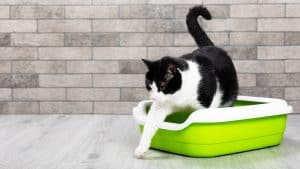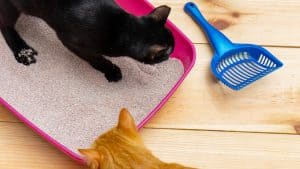Cats can be downright mysterious at times, especially concerning their litter box habits. Have you observed your cat throw up after using the litter box?
It's a perplexing behavior that might leave you concerned and looking for answers.
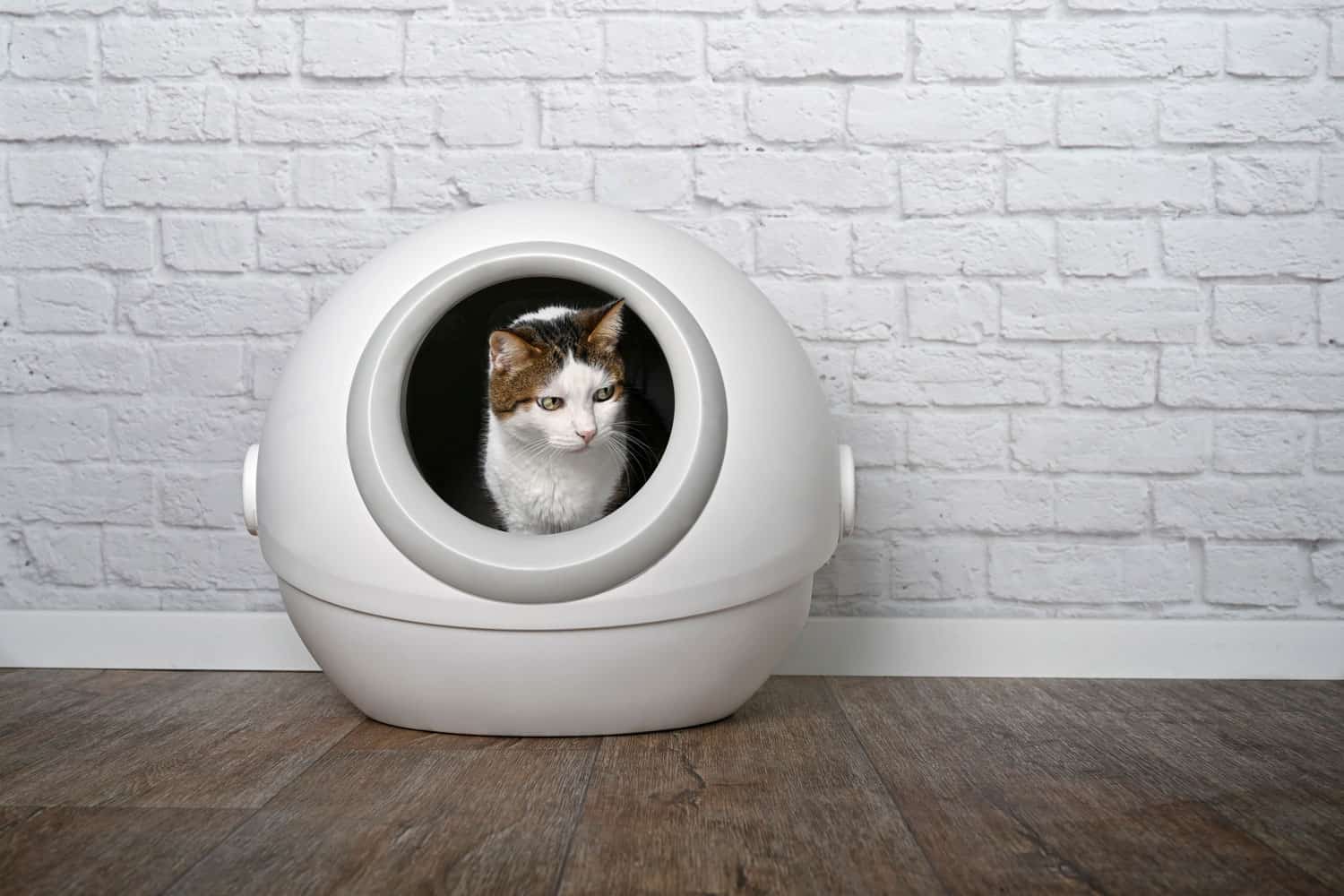
You're not alone, and understanding what's going on can help you take better care of your furry companion.
There could be several reasons behind this behavior, ranging from health-related issues to the type of litter used.
As you navigate this, you'll gain insights to make informed decisions for your cat's welfare.
We're here to guide you in understanding these potential causes and finding appropriate solutions, equipping you to maintain your pet's health and happiness.
Possible Causes of Post-Litter Box Vomiting
Below are some reasons why your cat might vomit after using the litter box. You may notice the following symptoms in your adult cats or kittens alike.
Hairballs
One common reason for post-litter box vomiting is hairballs. Cats groom themselves frequently, and this can lead to ingesting their loose fur.
Over time, this fur can accumulate in their stomach, forming a hairball.
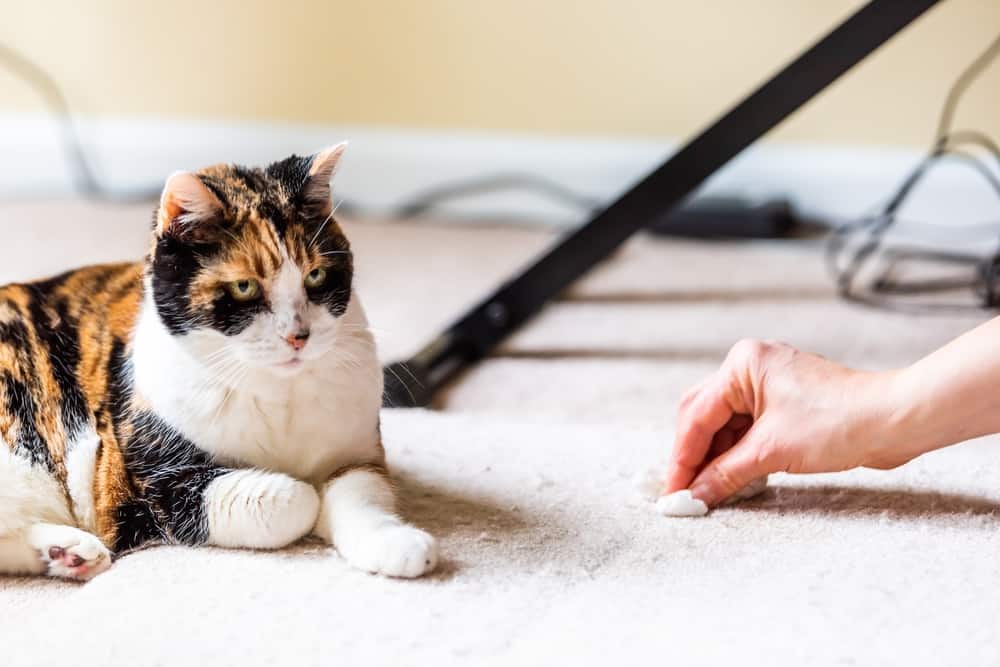
As your cat strains in the litter box, it may put pressure on its stomach, causing them to vomit up the hairball.
To help prevent this issue, groom your cat regularly and consider providing them with a hairball control cat food or supplement.
Click here to see this cat grooming kit on Amazon.
Cat Food and Diet Issues
Your cat's diet could be a factor in their vomiting. Food allergies, dietary sensitivities, or a sudden change in their food can all lead to an upset stomach.
If you've recently changed your cat's diet or suspect an allergy, it's worth trying a different cat food or talking to your veterinarian about dietary recommendations.
Click here to see this cat food on Amazon.
Inflammatory Bowel Disease
Inflammatory bowel disease (IBD) is a chronic inflammation of your cat's digestive tract.
This can cause diarrhea, vomiting, and stomach pain, especially when your cat strains in the litter box.
Constipation and Blockage
Constipation could also cause your cat to vomit after using the litter box.
The strain of trying to pass a difficult bowel movement can lead to nausea and vomiting.
If your cat is regularly having trouble in the litter box or experiencing pain, this might be a sign of a blocked intestine caused by foreign objects, tumors, or other health problems.
Anxiety and Stress
Emotional factors like anxiety and stress can also lead to vomiting in cats.
If your cat feels unsafe or under pressure while using the litter box, it may vomit as a stress response.
You can help reduce their anxiety by providing a quiet and private space for their litter box or using stress-management techniques like pheromone diffusers.
Click here to see this pheromone diffuser on Amazon.
Medical Conditions
Various medical conditions can cause a cat to vomit after using the litter box, including urinary tract infections, diabetes, kidney disease, and even cancer.
Identifying Signs of a Problem
Understanding your cat's behavior is crucial in identifying if there is a problem.
Observing changes in their habits, especially related to the litter box, and their physical health can provide valuable information.
Frequency and Severity
Occasionally, cats may vomit after using the litter box.
However, if you notice your cat throwing up more frequently or exhibiting more severe symptoms, this could signal an underlying issue.
Pay attention to how often this happens and how much vomit is produced.
Appearance of Vomit
When examining your cat's vomit, take note of its appearance. Vomit that consists of partially digested food may indicate that your cat is eating too quickly.

On the other hand, clear or frothy vomit could be a sign of a more serious issue.
Additionally, watch for any traces of blood or a strong, foul odor, as these could indicate potentially severe health problems.
Changes in Litter Box Habits
Keep an eye on your cat's litter box habits.
If you notice any significant changes, such as increased frequency of urination or difficulty in passing stool, this could be linked to your cat's vomiting.
Changes in litter box habits might be a symptom of an underlying medical condition.
When to Consult a Veterinarian
Recognizing when to seek professional help is crucial for your cat's health.
Decision Factors
As a loving cat owner, you understandably want the best for your feline friend.
There are several circumstances in which it's essential to consult a veterinarian when your cat vomits after using the litter box.
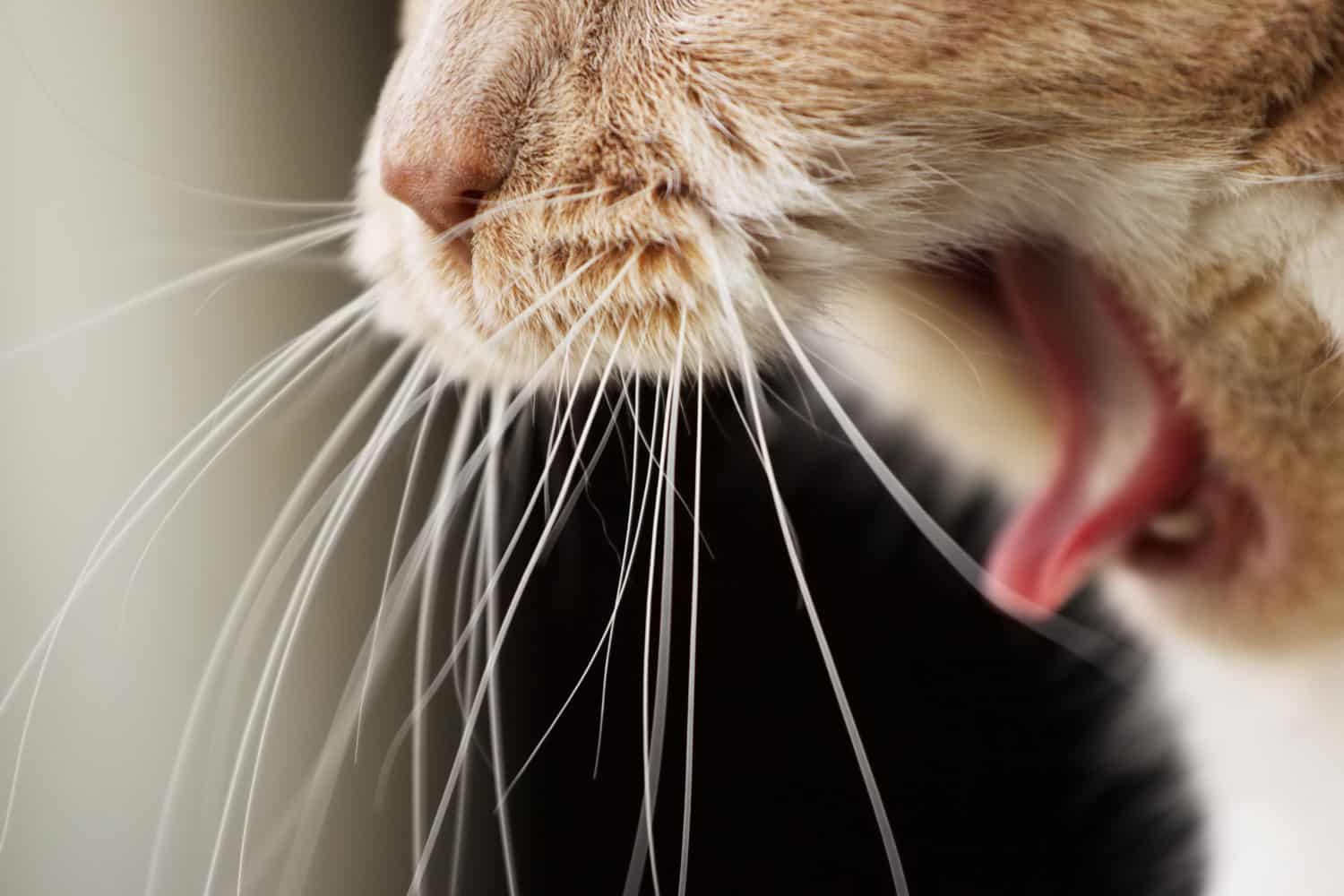
First, consider your cat's age. If your cat is very young or a senior, it might be more susceptible to health problems.
Watch out for persistent vomiting, as it may indicate underlying health issues that require veterinary attention.
Second, take note of any recent changes in your cat's behavior, habits, or diet.
An abrupt change may indicate allergies or sensitivities that could lead to vomiting.
Also, be mindful of other symptoms, such as lethargy, diarrhea, or loss of appetite, which may suggest more serious health problems.
What to Expect During a Vet Visit
When you take your cat to the vet, be prepared to answer questions about your pet's lifestyle, diet, recent behavior changes, and the frequency of vomiting incidents.
The veterinarian may perform a physical examination, looking for signs of allergies or other health problems.
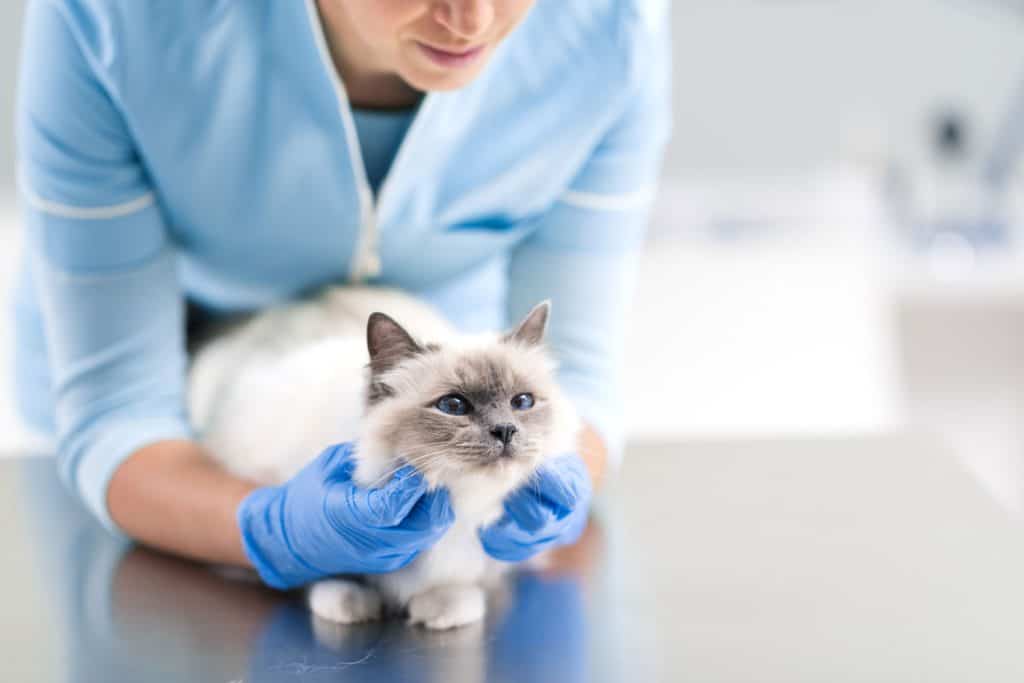
In some cases, the vet may run diagnostic tests, such as blood work or x-rays, to assess your cat's overall health and determine the cause of the vomiting.
They'll then discuss a treatment plan with you, which may include dietary adjustments, medications, or other measures tailored to your cat's specific needs.
Remember that your cat's well-being is your top priority, and seeking veterinary care when needed will ensure they stay happy and healthy.
Don't hesitate to consult with a professional if you're ever concerned about your feline friend's condition—it's always better to err on the side of caution.
Managing and Preventing Vomiting
To manage and prevent your cat's vomiting, a few key areas need to be addressed:
Adjusting Diet and Food
One way to help manage your cat's vomiting after using the litter box is by adjusting their diet.
It's important to choose high-quality cat food that meets their nutritional needs.
Switching to a different type of cat food product can help, as well as feeding them smaller, more frequent meals to aid digestion.
Make sure they're getting enough exercise to support healthy bowel movements, and always provide access to fresh water.
Addressing Anxiety and Stress
Cats can become stressed for various reasons, and anxiety may lead to vomiting.
To help reduce their stress, pay attention to their needs and provide a calm environment.
Some ways to alleviate your cat's anxiety could be engaging in regular playtime, providing hiding spots, and adding interactive toys.
Click here to see this interactive cat toy on Amazon.
Additionally, consider using pheromone-based products that will make your cat feel more at ease.
Click here to see this pheromone cat collar on Amazon.
Litter Box Maintenance
Your cat's litter box plays a significant role in their comfort and well-being. The size and location of the litter box can influence your cat's behavior.
Click here to see this litter box on Amazon.
Make sure the box is appropriately sized and placed in a quiet, low-traffic area for privacy.
It's essential to maintain cleanliness by frequently removing waste and changing the litter.
Old litter can emit a strong scent, which can cause discomfort when your cat uses the box.
Scoop out waste daily, and replace the litter entirely on a regular basis.
If your home has multiple felines, make sure to provide a sufficient number of litter boxes—ideally, one box per cat, plus an additional one.
This ensures each cat has its own space to eliminate waste, reducing the chance of stress and related vomiting.
Wrapping Up: Navigating Your Cat's Post-Litter Box Vomiting Episodes
In summation, after delving into the various factors that could cause your cat to vomit post litter box use, you're now equipped with the knowledge to address this issue effectively.
By focusing on dietary adjustments, reducing anxiety, and ensuring proper litter box maintenance, you can create a more comfortable environment for your feline friend.
Stay observant and proactive in catering to your cat's needs, and you'll be well on your way to managing and preventing any post-litter box vomiting episodes.
Your cat’s health and happiness are paramount, and now you have the tools to ensure both.
Check out our other articles on litter box topics below.







